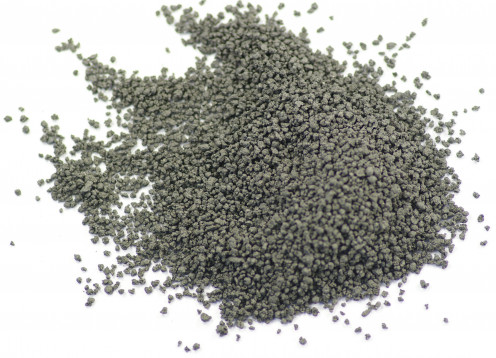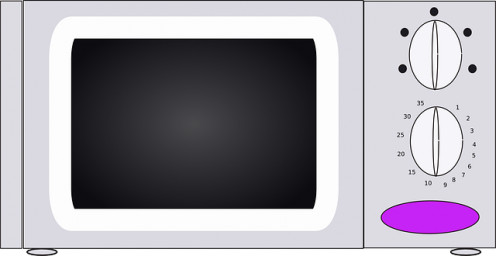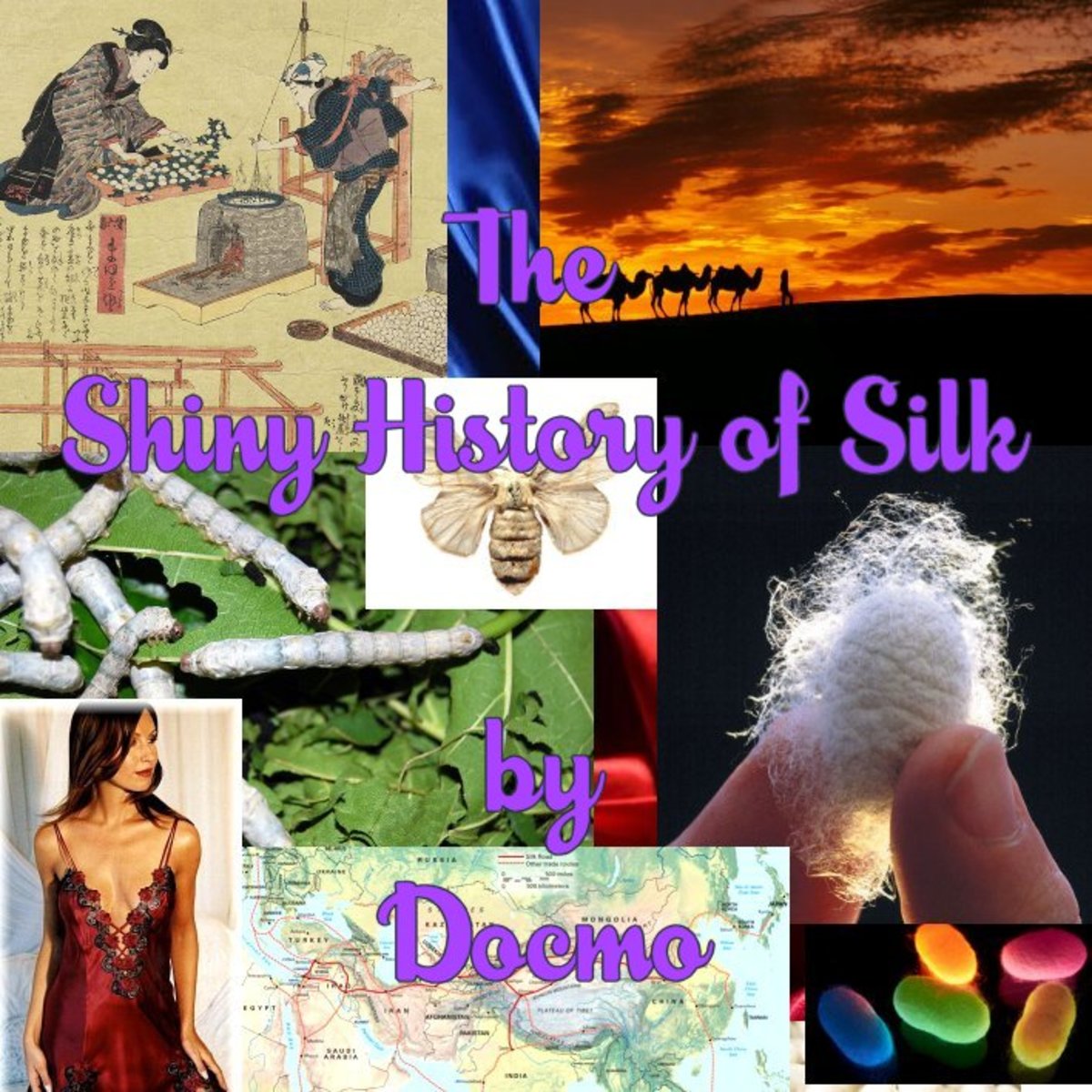10 Accidents Which Led to Great Scientific Discoveries
Scientist at work

Introduction
Do you know that kind of situation when you start doing something and you end up doing something totally different? Well, in the past, this kind of situations led to great discoveries.
It is hard to imagine how certain products were invented, especially if we talk about innovations that have changed the world. However, some of the most famous inventions were created accidentally, while scientists were trying to find other things.
Besides penicillin, "DNA fingerprinting" in forensics, synthetic colors, chips, cookies with chocolate and cornflakes, there are a lot more things, some that we even use frequently, which were created by accident when people, scientists, were searching for a totally and completely different other things.
Gunpowder

1. Gunpowder
In the ninth century, Taoist monks were trying to synthesize the "elixir of life" from potassium nitrate, sulfur, realgar and dried honey. Ironically, they manage to produce what could be the exact opposite of an elixir of life, the gunpowder.
Nowadays, gunpowder is used frequently, for explosives, guns and even tattoos.
Phosphorus glowing

2. Phosphorus
Around the year 1675, the scientist Hennig Brand, from Germany, was keeping 50 buckets of urine in the cellar, hoping to find a method to make gold. In fact, what he was looking for was the "philosopher's stone" which is said to have the power to transform the ordinary metal in some precious metals.
Finally, someday, the alchemist from Hamburg heated the residues resulted from boiled urine, until the flask (glass object used in chemistry in laboratory for distillation or dry distillation of substances) became red and a fluid was flowing out, a fluid which was giving some kind of light. He put some of the fluid results in a covered jar, and he noted that the substance was still having a pale green glow.
In the end, the discovery was named from the Greek word "phosphorus", which means "light bearer".
Kevlar cloth

3. Kevlar
In 1964, Stephanie Kwolek was responsible for creating a new light but resistant fiber from which tires could be manufactured. For this task, Kwolek was working with polymers that had the potential to be used for commercial use. Overall, her task was to mix the solutions to determine their reactions and then placing the solution in a die (cylindrical metal piece, with bottom set with holes, which would pull the solution rayon yarn or textile fibers obtained by chemical).
One day, she mixed a solvent to dissolve the polymer, and the result was an unexpected mixture separated into two layers with different characteristics: one coat was clean and yellow, and the other was cloudy, shiny and thin.
When Kwolek created fibers from this material she found out that they were very strong, but also light comparing to the rest. Ten years later, the discovery called Kevlar, a material five times stronger than steel, was used for body armor.
Superglue

4. Super Glue
The Super Glue, also known as cyanoacrylate, was first discovered in 1942 by Dr. Harry Coover. Coover was trying to create plastic site for weapons used by soldiers in World War II. In one of his attempts, Coover has created this adhesive known today as super glue. However, as its creation was not helpful to the project , the inventor has abandoned the product.
Nine years later, in 1951, while working for Eastman Kodak, Dr. Coover was supervising a project and he rediscovered by accident the glue. This time he did not ignore the invention and he realized its potential.
Cellophane

5. Cellophane
In 1900, the Swiss Jacques Brandenberger was inspired by a customer of a restaurant who spilled wine on the tablecloth, so he began to focus on forming a waterproof coating to be applied on textiles.
In time, he conducted research on a variety of materials. Finally he found a viscous liquid which he applied on a textile material.
The experiment failed, because the material has become too rigid and in the same time fragile. However, he noted that from the coating can be pilled a transparent material that may have other applications. Therefore, the researcher begins to focus on a new project about that transparent material, and in 1908 he created a machine that was producing transparent sheets named cellophane.
Teflon Pan

6. Teflon
In 1938, Roy Plunkett, a chemist at DuPont, combined tetrafluoroethylene (TFE) with hydrochloric acid in the hope that it will creat a better refrigerant. After combining this 2 elements, he stored about 45 pounds of TFE in cylindrical containers.
After a while he opened and cooled the pressurized containers, and saw that nothing came out of them, although by weight, they seemed to be full. Analyzing more cylinders, Plunkett found that the gas was transformed in a white powder polymer called polytetrafluoroethylene resin (PTFE) with four key properties: it was very slippery, non-corrosive, chemically stable and had a very high melting point.
Subsequently, the substance discovered by Plunkett was named Teflon, and in 1954, the French engineer Marc Grégoire created the first pan coated with this material.
Viagra

7. Viagra
Probably the most "happy" and known scientific error is the one that led to the creation of Viagra. The blue pill was discovered accidentally by scientists from Pfizer laboratories. Initially they were testing sildenafil (the active ingredient in Viagra) because it has the ability to lower blood pressure, which makes it ideal for creating a drug against cardiovascular problems.
After clinical tests, scientists found that the individuals involved in the study didn't want to give up the pills, just because they had a desirable side effect.
Secured Window

8. Secure glass
It may seem funny, but secured glass was inspired by the clumsiness of a researcher who has broken a recipient from a shelf. When he noticed that the container has not been broken into dozens of pieces scattered on the floor, the researcher examined more closely the cup.
He realized that the container had not been washed well and therefore it contained plastic padded inside the cup which prevented the glass from spreading when it was broken.
Microwave

9. Microwave
Engineer Percy Spencer was the one who discovered that the food can be heated in the microwave. But in reality, he was studying something totally different.
Being a Raytheon Employee (an American aerospace and defense company), Spencer was making a research on a radar when he noticed that in the presence of such a device a chocolate bar that he kept in his pocket melted. When he realized that microwaves may be responsible for the phenomenon, Spencer repeated the experiment with Popcorn and an egg which then exploded in his hands.
Thanks to the discovery, in 1945 the microwave was invented.
LSD

10. LSD
Lysergic acid diethylamide, soon known as the LSD, was discovered accidentally. But its effects were discovered very fast.
When the Swiss chemist Albert Hofmann began working for Sandoz Laboratories in 1929, his mission was to study the compounds derived from a fungus of the genus Claviceps. Examining and assessing the properties of these compounds to determine their potential use in medicine, he produced a derivate called LSD-25. However, other scientists of the time figured that the compound was not something special, and Hofmann abandoned his project.
Five years later, the scientist decides to take another look at the product, hoping to uncover its unique properties. While he was producing it in 1943, Hofmann said that he felt strange sensations that interrupted his work.Accidentally, during the production of LSD, he ingested substances that gave him these very strange feelings. After he got home and laid on the bed, Hofmann saw "fantastic images" and "Kaleidoscopic" forms. The result of this was the discovery of one of the most powerful psychedelic drug.






